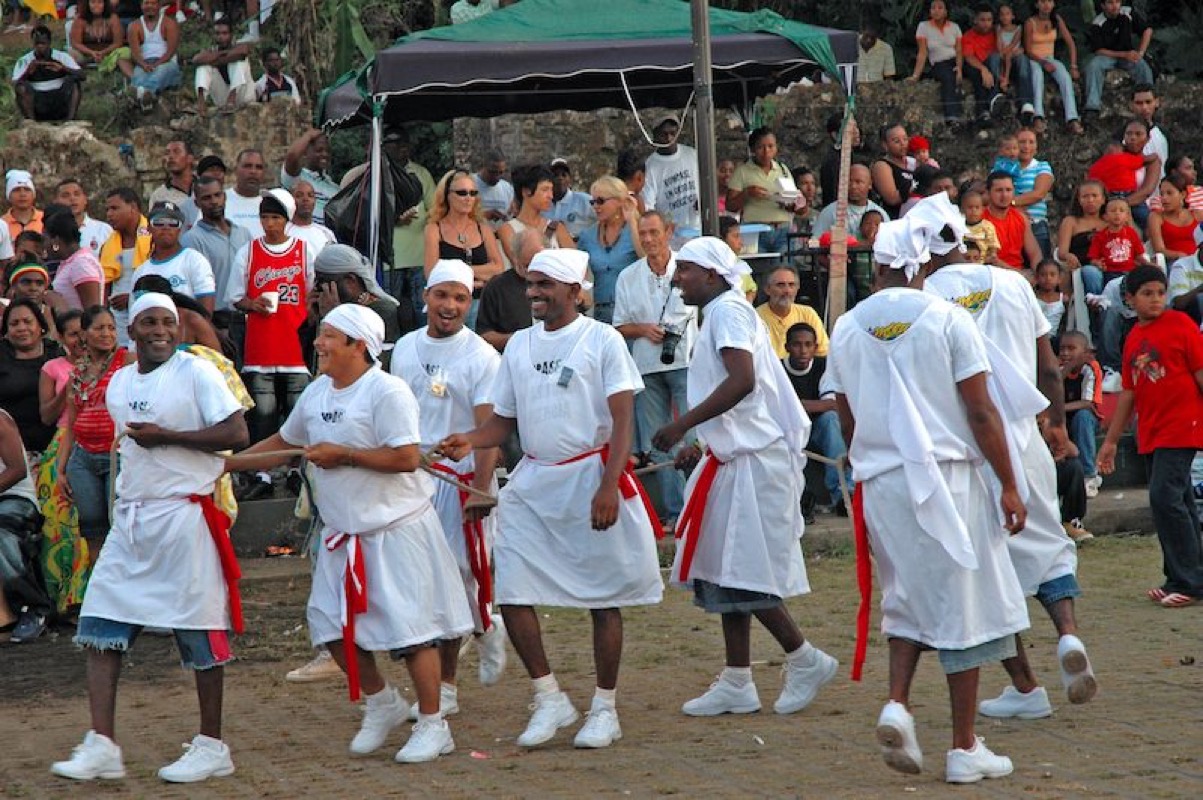Archangel and Ánimas (Photo by Elaine Eversley)
In this photograph, the Angels are preparing to capture the Devil to Baptize him. This is the concluding event of the Congo Carnival Tradition.
Of the Archangel, Congo Queen Melba Esquina explained, “The Angel protect[s] the souls [ánimas] so that they don’t fall under the power of the Devil.” Celedonio elaborated:
When the Devil plays with the Congos, a group of people comes, called Angels, to get the Devil for baptism. After they tie up the Devil, they go over to the table where the Priest is going to baptize the Devil. Then they baptize him and the Devil is let free. That’s where the association between the Devil and the Congos ends. This happens every year on Ash Wednesday.
The Archangel and each of the six Souls wear calf-length white tunics and white bandanas that are tied around their heads. Las Ánimas move as a unit, tethered together by a rope and led by the Archangel, who carries a large wooden cross like the Queen. Unlike Congo men and local observers who play with the Devil while dressed in layers of long pants to protect their legs from the force of his whip, the Archangel and Souls play bare-legged, their eventual bloody welts a part of their costume. And while the male Congo performers, including the King, perform in blackface, the Angels, Souls, and Priest do not. The Priest’s only distinguishing feature is a basil leaf and container of water, which he uses to bless the Devils.
Excerpted from “Prologue” and “Chapter Two” of When the Devil Knocks: The Congo Tradition and the Politics of Blackness in 20th Century Panama, The Ohio State University Press (in press)

